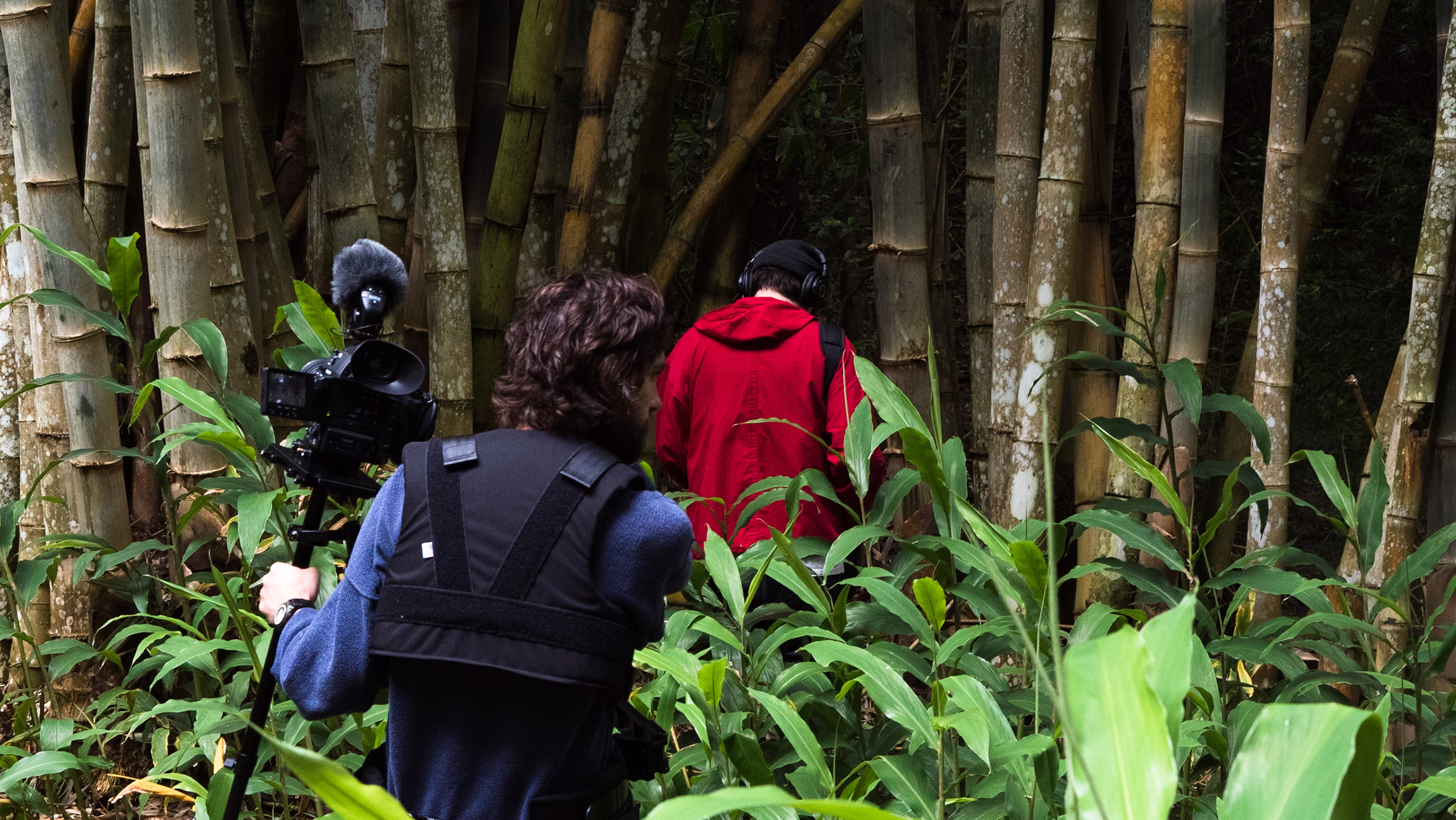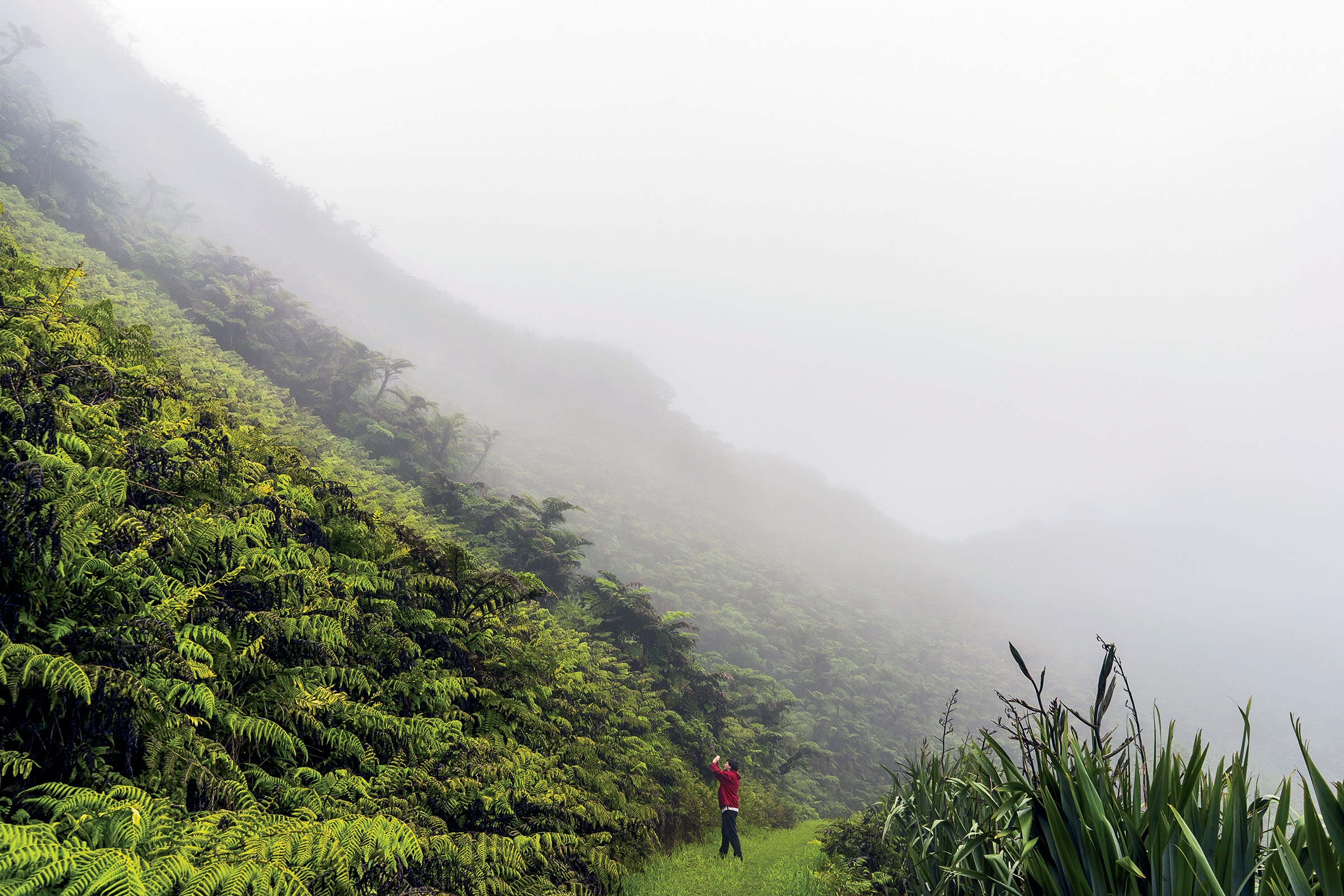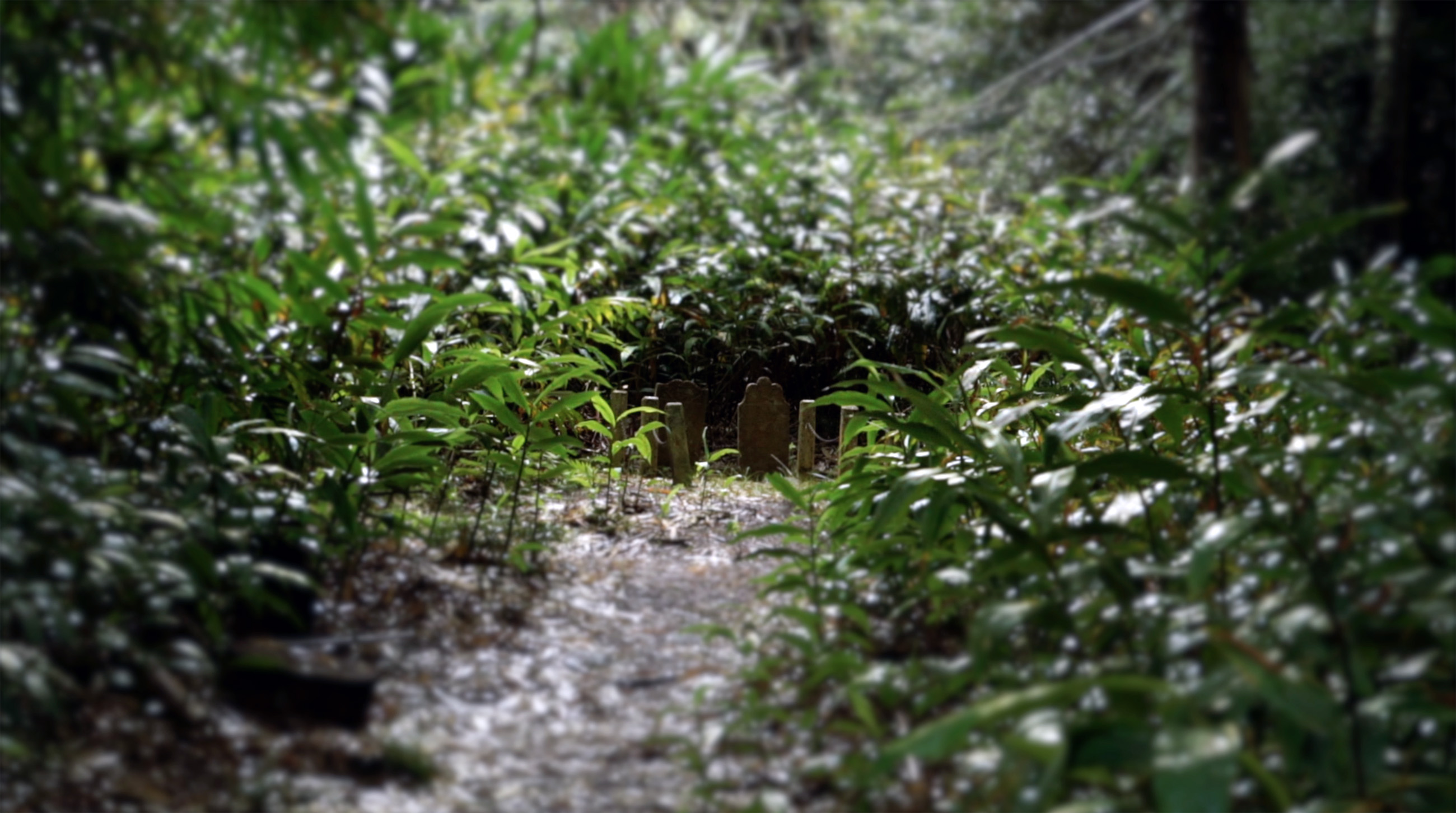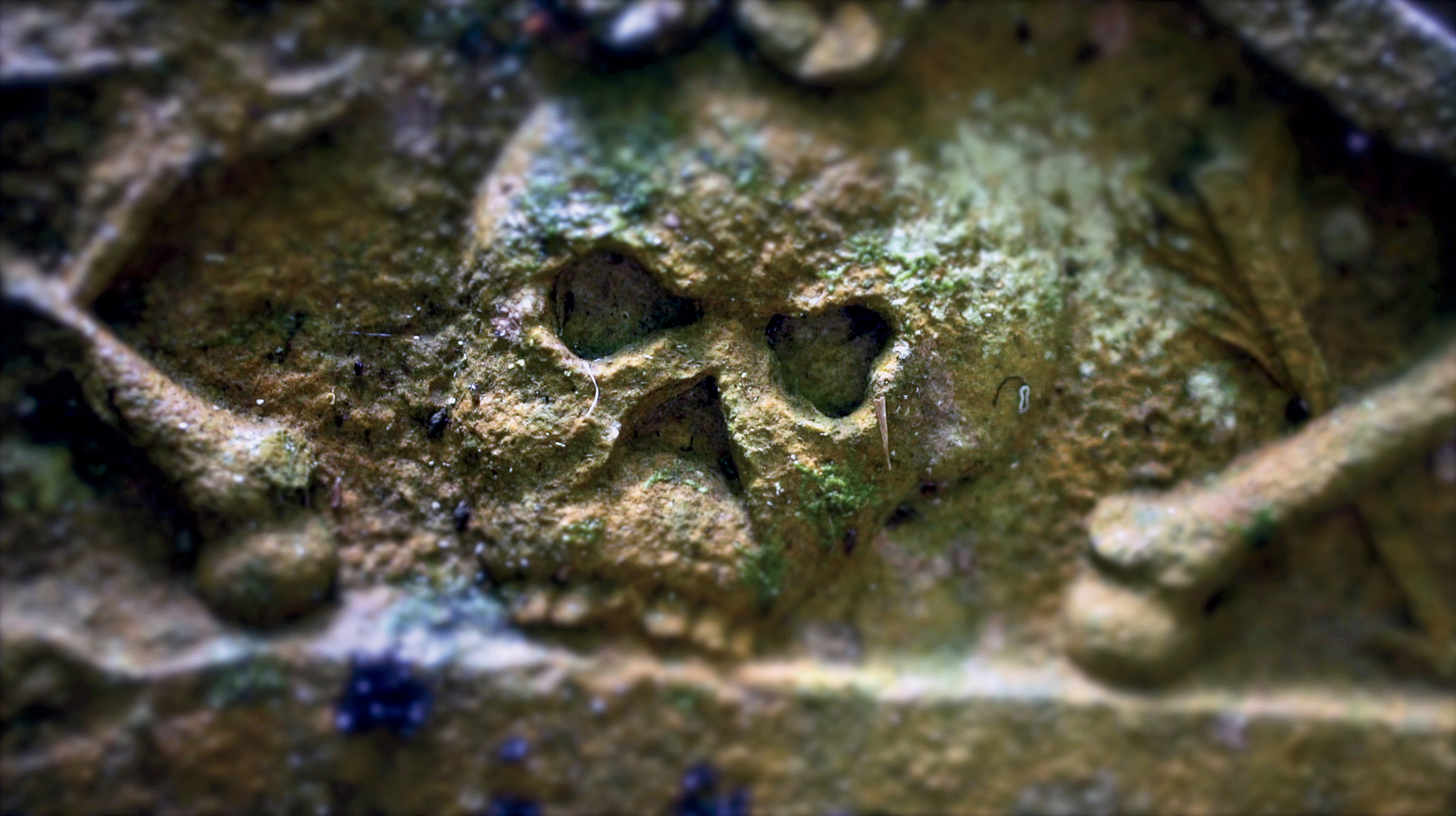The bones aren’t in pizza boxes, despite what the rumors said — though it was this very rumor that drew filmmakers Joseph Curran and Dominic de Vere of the British film company PT Film to a macabre mystery on the island of St. Helena. “The bones are actually in archival boxes, in an old storeroom attached to the prison,” Curran says. But the rest of the story — forgotten corpses excavated from mass graves to make way for an airport, after which the bones languished — is all true.
Best known as the island where Napoleon was exiled and died, St. Helena was in the news last year because of the awkward opening of its first-ever airport. (News reports said it was too windy for a lot of planes to land.) What most people still don’t know is that this island, located in the middle of the Atlantic between southern Africa and Brazil, is a physical link to the Middle Passage, the notorious route slavers used to reach the New World with their human cargo.

Between 1840 and 1874, an estimated 30,000 Liberated Africans were released into refugee camps on St. Helena. When they died, an estimated 8,000 were buried in three vast graveyards in the shallow volcanic earth in Rupert’s Valley and at the quarantine station in Lemon Valley.
Curran, de Vere, and soundman Oliver Sanders say that, while locals knew about the bones, few knew who they belonged to. These bodies didn’t represent “Saints,” as locals are called — they weren’t seen as part of the island. One resident named Colin Benjamin told the film crew about using a skull and leg bone to play baseball: “I’m sorry about that, but being kids that’s the way we grew up.”
“Bones sometimes just appear here,” Curran says. We’re walking through an industrial area in Rupert’s Valley, on the northwest of the island. Continuing up the valley, we reach a freshly paved road and the second designated graveyard, which was put into official use after the first burial ground was filled. It’s a scramble down from the road, through dry prickly bush, into the unmarked burial ground. I catch sight of a bone-white fragment and cautiously brush away the earth. It’s a piece of old china. The entire area, which stretches up a dry gully to where it meets graveyard number three, is scattered with rocks and debris.

Curran explains the road was built to bring fuel and supplies to the airport. It was during a geotechnical survey that workers discovered signs of the burials, and, in 2008, archaeologists led by Andrew Pearson, an independent archaeological consultant, excavated the bones of some 325 Liberated Africans.
The archaeologists unearthed a combination of individual, multiple, and mass graves. Most contained children between eight and 12 years old; some were wearing ribbons or beads; in one case, a tiny copper bracelet.
Annina van Neel, chief environmental commitment officer of the airport construction company Basil Read, oversaw later finds. “She told us about finding remains, and the sleepless nights it would cause her,” Curran says. “I cried for the first time when I watched van Neel cry. The humanity of it all just hit me.”

Curran says that filming the documentary was like assembling a puzzle; every person they interviewed had a different relationship to the bones and was just a small piece of the story. As their interviews continued and the story took shape, de Vere and Curran began to realize how timely it was: “There were times when the numbers of African refugees almost numbered residents,” he says. The islanders would send word to England to say they needed help — that they were struggling to manage and care for the new arrivals — “and then another ship would show up, and they had to cope.” With an ongoing refugee crisis in Europe and beyond, the bones of St. Helena today tell an urgent story.

Slavery and St. Helena have been linked almost since the island was discovered, uninhabited, by Portuguese sailors 500 years ago. Five of the island’s earliest inhabitants were escaped enslaved people. By 1723 over half of the island’s 1,100 residents were enslaved. Slavery began its decline in St. Helena in 1792, when local laws made it illegal to import new enslaved people. In 1832, slavery was abolished when the East India Company purchased the 614 remaining slaves from their owners for a sum of £28,066 and 17 shillings ($3,328,554 in today’s money) — and, soon after, the role of many Saints shifted from owner to ally.
One way that the denizens of St. Helena helped fight slavery was by sea: De Vere explains that ships like the British HMS Waterwitchformed a blockade off the African coast. When they caught a slave ship, crews boarded it and brought it to St. Helena, where the human cargo was released and the ship was broken up. During her years of service, Waterwitch captured around 40 slave ships, liberating thousands of Africans.

In April 1843 Waterwitch captured the Brazilian-flagged ship Conceição de Maria. Some 390 people had been loaded aboard the small boat in Benguela, Angola. After 22 days at sea, 349 captives, 60 percent of whom were children, were liberated in St. Helena; 41 had died during the voyage. Many were buried in St. Helena’s mass graves.
Beyond the sheer tragedy of the finds on this island, archaeologists say the importance of these lives can’t be underestimated. This is the only known assembly of large numbers of first-generation enslaved Africans in the world. They are thought to be the last trace of the estimated 1.8 million people who perished on the Middle Passage, according to the Trans-Atlantic Slave Trade Database.
Research opportunities have been limited by local politics, but bone fragments from the graves were part of DNA sequencing and radiogenic isotope analysis in the eurotast project. The project’s goal is to identify the origins of the people who were stolen during the slave trade. Simply put, knowing who is buried in St. Helena may answer elusive questions about the people who arrived in the Americas.

St. Helena is a magical place. Granite spires rise out of rolling green farmland on one part of the island, while, in other places, multi-hued volcanic cliffs drop abruptly into the sea. These days, the population of 4,000 relies on supplies brought by ship. But in 1850, the island’s farms, fishery, and water supply had to provide for a population nearing 7,000, the hundreds of ships that called each year, and the influx of African refugees.

One sunny afternoon, the island appears more pastoral than imposing. Curran suggests we sail the inviting waters toward the Liberated Africans Depot, the camp set up to house refugees, in Rupert’s Valley. From aboard a 40-foot catamaran, he wants to film the sea route the captured slave ships would have taken before visiting the graveyards by land. Sitting on deck, listening to gentle waves, we’re entertained by swooping black noddies, and soon catch a glimpse of a huge whale shark as we approach the rugged red cliffs.
Even beauty can’t obscure the truth: Experts argue about the true human cost of slavery, but estimates from the Trans-Atlantic Slave Trade Database say some 12.5 million people were loaded aboard ships by European slave traders for the journey to the New World, and between 10 and 20 percent died during transport. Records tell us that people were packed into the dank hulls of ships, separated by sex, and kept naked and chained. When the slave ships arrived in St. Helena, the captives were often near death thanks to dehydration, dysentery, smallpox, scurvy, and violence.
In the Jamestown library, I come across one account of a ship’s arrival. The paragraph, written by the surveyor and engineer John Mellis in 1861, describes how horrified Mellis was at the brutalities endured by the Africans: The whole deck … was thickly strewn with the dead, dying and starved bodies of what seemed to me a species of ape which I had never seen before. One’s sensations of horror were certainly lessened by the impossibility of realizing that the miserable, helpless objects being picked up from the deck and handed over the ship’s side, one by one, living, dying and dead alike, were really human beings.

Despite grave odds, for the three decades the Liberated Africans Depot was open, locals nursed thousands of the newly freed back to health. Over the years they offered English lessons, schooling, and church services to survivors. Hundreds of refugees opted to stay on the island. The remainder, speaking multiple languages and originating from far-flung parts of Africa, often couldn’t communicate where they were from, making it impossible to return them. Instead they were sent as indentured servants to places including British Guiana, Jamaica, and Trinidad. Walking through the dusty heat of graveyard number two, I can’t help but compare this dreary place with Sane Valley, the lush grove in the island’s interior where Napoleon was interred. Napoleon, whose body was returned to France in 1840, gets an annual remembrance ceremony. The nameless 8,000 Liberated Africans buried on St. Helena don’t have a single memorial plaque or grave marker between them.
Curran explains that a memorial for the Liberated Africans will come — but because the bones are claimed by no one, islanders have argued over how best to commemorate them, and even who should be given a role in the decision. People have offered various ideas: immediate interment; plantings to beautify the area; an art installation; a tomb; or even sending the bones back to Africa. Until a decision is made, the excavated bones sit off-limits in a dilapidated storeroom, and the rugged graveyards remain unmarked, untended, and largely unknown.
I think it might not matter how the bones are memorialized, but simply that they are.

I recall that passage I read — Saints picking up the dying Africans one by one as they carried them to freedom — and about how the island’s small population did all it could to care for and bury the refugees, who just kept coming. I think about how deeply the archaeologists were moved during the excavations; and how the descendants of enslaved Africans may find answers to questions about their history within the DNA. I reflect on how the film crew is so committed to telling this story they simply can’t let it go.
And I wonder if maybe this story can serve to remind us of the value of human kindness and compassion in this new era of mass displacement, with so many souls in peril on the sea.





